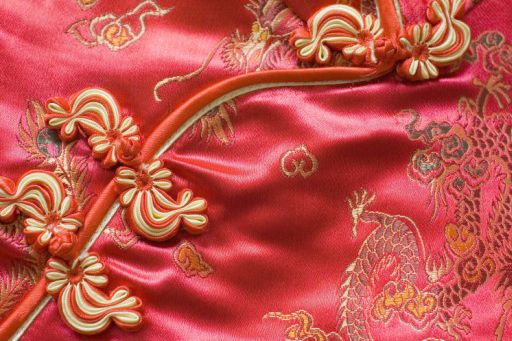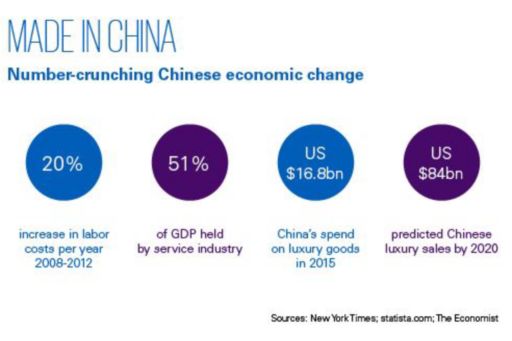China has designs on fashion
China has designs on fashion
As their industry shifts away from manufacturing to services and retail, Chinese consumers have embraced haute couture.

“Time is Money, Efficiency is Life”, was once the billboard slogan which greeted ferry passengers from Hong Kong to China’s manufacturing hub, Shenzhen, and with good cause. Since it overtook the US in 2010, China has held tight to its status as the world’s largest manufacturing power, making televisions, smartphones and clothes cheaply due, in part, to low rent and favorable taxing.
However, it is no longer cheap to produce inexpensive goods in China, largely because of labor costs, which rose by 20% a year between 2008 and 2012. Premier Li Keqiang addressed the issue in his Work Report at the National People’s Congress in 2014, stating China needed to readdress its economic plan and “rebalance away from investment and trade toward domestic consumption and service industries.”
The shift to secondary and tertiary industries has been noticeable. While China has lost ground in the labor-intensive manufacturing of clothing and toys to Vietnam, Bangladesh and Sri Lanka, the country has become the largest exporter of high-tech products in Asia, particularly mechanical and electronics, overtaking Japan, with a 43.7% share of the market.

In Shenzhen, the hub of China’s manufacturing industry since the 1970s, factories have diversified. Rappo Technology Co. previously made computer mice and keyboards, but now produces consumer drones.
Tertiary industries such as financial services, insurance, tourism and entertainment have experienced a renaissance as the country shifts its economy toward consumption. In 2015, the service industry accounted for 51% of the GDP, up from 44% in 2011.
With rapidly rising incomes and a shift in attitude toward displays of wealth, the luxury service industry and luxury goods are experiencing favorable fortunes. Dr Tina Zhou of luxury research consultancy Fortune Character Institute notes: “In the past, luxury goods were seen as a symbol of wealth and status for Chinese consumers. Now they buy luxury goods for their own enjoyment.”
In 2015, the country’s luxury spend reached US$16.8bn, accounting for 20% of global luxury sales. It’s expected sales will reach US$84bn by 2020, with purchases by Chinese abroad set to reach US$97bn.
While China alters its spending habits and steps away from low-value manufacturing, global economics are shifting. Many goods can no longer be branded ‘Made in China,’ or ‘Made in Taiwan’ as they are ‘made in the world’. Using the 2011 report Capturing Value in Gobal Networks, your US$400 iPad may say ‘Made in China’ but only US$10 of that has anything to do with the country.
Jessie Qian, Head of Consumer Markets for KPMG in China, says: “The government’s strategy – to move up the value chain and to stimulate the consumer economy – looks sensible in the long term. And the country has the resources to achieve its goals: by the end of this year, for example, more robots will be working in China than in Japan.”
Consumer Currents: Off the shelf
© 2024 KPMG Central Services, a Belgian general partnership ("VOF/SNC") and a member firm of the KPMG global organization of independent member firms affiliated with KPMG International Limited, a private English company limited by guarantee. All rights reserved.
For more detail about the structure of the KPMG global organization please visit https://kpmg.com/governance.
